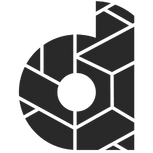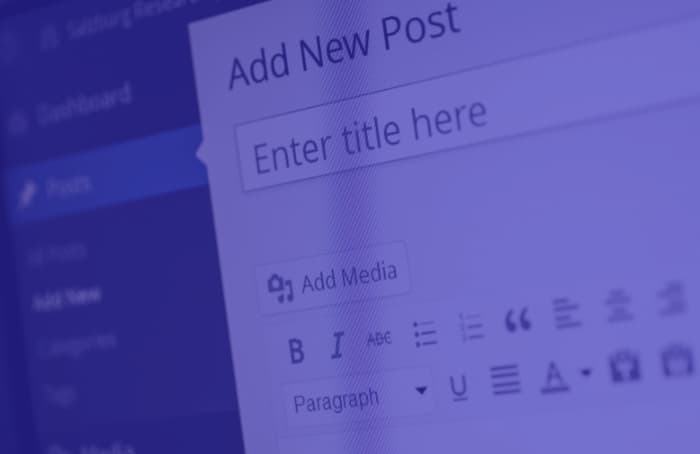What are CMS generated errors?
CMS (Content Management System) generated errors are errors that occur on a website as a result of the CMS itself. A CMS is a software application that is used to manage the content of a website, including the creation, editing, and publishing of web pages.
CMS generated errors can occur for a variety of reasons, including incorrect configuration of the CMS, issues with the software itself, or general user errors. Some common types of those CMS generated errors include broken links, duplicate content, incorrect hreflang tags, slow page loading times, and missing or incorrect meta tags.
The most common CMS generated errors include:
Broken links:
These are links that point to pages that no longer exist or have been moved.
Duplicate content:
This occurs when the same or similar content appears on multiple pages of a website.
Incorrect hreflang tags:
Hreflang tags are used to indicate to search engines which language and regional versions of a webpage should be shown to users. Incorrect hreflang tags can lead to search engines showing the wrong version of a webpage to users.
Slow page loading times:
Page loading times can impact a user’s experience and can also affect your website’s search engine rankings. Slow loading times can be caused by a variety of factors, including large image files and complex code.
Missing or incorrect meta tags:
Meta tags provide information about a webpage to search engines. Missing or incorrect meta tags can affect how your pages are displayed in search results, which can impact your website’s visibility and search engine rankings.
All these errors mentioned above can cause a poor user experience and can also impact your website’s search engine rankings.
By regularly monitoring your website and addressing these common CMS generated errors, you can improve your website’s performance and provide a better user experience.
The use of wrong hreflang links for deactivated or redirected category pages
Hreflang tags are used to indicate to search engines which language and regional versions of a webpage should be shown to users. When hreflang tags are not correctly implemented, search engines may display the wrong version of a webpage to users, which can lead to a poor user experience.
To fix this issue, you will need to identify any deactivated or redirected category pages on your website and ensure that the hreflang tags on those pages are correct. This can be done by using a tool such as Screaming Frog to crawl your website and identify any pages with incorrect hreflang tags.
Once you have identified the problematic pages, you will need to update the hreflang tags on those pages to reflect the correct language and regional versions of the pages. You may also need to update the redirects on those pages to ensure that users are directed to the correct version of the page.
In addition to fixing the hreflang tags on deactivated or redirected category pages, it is also important to regularly monitor your website for other errors.
Broken links
To fix a broken link, follow these steps:
- Identify the broken link on your website. This can be done using a tool such as Screaming Frog, which can crawl your website and identify any broken links.
- Determine the cause of the broken link. This could be due to the linked page no longer existing, or the page having been moved to a new location.
- If the linked page no longer exists, remove the link from your website. This will prevent users from trying to access a page that is no longer available and will improve their experience on your website.
- If the linked page has been moved to a new location, update the link on your website to point to the new location. This will ensure that users are able to access the correct page.
- Test the updated link to make sure it is working correctly.
By fixing broken links on your website, you can improve the user experience and avoid potential issues with search engine rankings.
Duplicate content
Duplicate content is a common problem on the web, and it can have negative consequences for both website owners and search engine users. Duplicate content refers to content that is identical or substantially similar to content that appears on other websites. This can happen for a variety of reasons, including accidentally publishing the same content on multiple pages of a website, or copying content from other websites without permission.
But why is duplicate content a problem? For search engines, duplicate content can create confusion about which version of the content is the original, authoritative source. This can lead to search engines splitting the ranking power of the content among multiple pages, diluting its potential visibility and impact.
For website owners, duplicate content can also harm a website’s search engine rankings. Search engines may penalize websites with significant amounts of duplicate content, lowering their visibility and making it harder for users to find their content.
So, what can be done about duplicate content? The best solution is to avoid publishing duplicate content in the first place. This can involve regularly checking for and removing duplicate content from a website, as well as properly citing and linking to external sources when using content from other websites.
In cases where duplicate content is found on other websites, it may be possible to ask the website owner to remove the content or to provide a link back to the original source. This can help to clarify the relationship between the content and improve its visibility in search results.
In conclusion, duplicate content is a common problem on the web, and it can harm a website’s search engine rankings and visibility. By avoiding publishing duplicate content and properly citing and linking to external sources, website owners can help ensure that their content is original and authoritative, improving its chances of success in search engine results.
Page loading time
A slow-loading website can frustrate visitors, causing them to leave the site before they have a chance to engage with its content. This can harm a website’s search engine rankings, as well as its overall user experience.
But what causes a website to load slowly, and how can it be improved? There are many factors that can affect page loading time, including the size and number of images on a page, the use of large or complex code libraries, and the overall design of the website.
One way to improve page loading time is to optimize the images on a website. Large, high-resolution images can take a long time to load, so it’s important to use appropriately-sized images that are optimized for the web. This can involve resizing the images to the appropriate dimensions, as well as using image compression to reduce their file size.
Another way to improve page loading time is to minimize the use of large or complex code libraries. These libraries can add significant overhead to a page, increasing its loading time. Instead, consider using simpler, more lightweight solutions that can achieve the same results without the added bloat.
Finally, website design can also play a role in page loading time. A cluttered, complex design can slow down a website, as can the use of too many large, high-resolution images. Instead, consider using a clean, minimalist design that focuses on the content and user experience, rather than on flashy graphics and animations.
In conclusion, page loading time is an important aspect of website performance, and it should be taken into account when designing and developing a website. By optimising images, minimising the use of large code libraries, and using a clean, minimalist design, it’s possible to improve a website’s page loading time, leading to a better user experience and improved search engine rankings.
To check your website’s page speed, you can use various online tools such as Google’s PageSpeed Insights or Pingdom Website Speed Test. These tools will analyze your website and provide suggestions for improving its performance.
To use Google’s PageSpeed Insights, simply enter your website’s URL into the tool and it will generate a report with suggestions for improving your page speed.
Pingdom Website Speed Test works similarly, but it also provides detailed information about your website’s performance, such as the time it takes for different elements on your page to load. To use Pingdom, enter your website’s URL and select a testing location, and the tool will provide a report with detailed performance information.
Meta tags missing or incorrect
Meta tags are often overlooked by website owners, but they play a crucial role in the success of a website. These HTML elements provide information about a webpage to search engines, helping them understand the content and context of the page. This information can include the page’s title, description, and keywords, and it can affect how the page is displayed in search results.
But despite their importance, meta tags are often misunderstood and misused. Many website owners believe that stuffing their meta tags with as many keywords as possible will improve their search engine rankings, but this is a fallacy. In fact, overusing keywords in meta tags can actually harm a website’s rankings.
So, what makes for effective meta tags? The key is to provide accurate and relevant information that accurately reflects the content of the page. The title and description tags, in particular, should be concise and compelling, drawing the reader in and encouraging them to click through to the page.
But meta tags shouldn’t be overly formulaic or mechanical. They should be crafted with care and thoughtfulness, using interesting and engaging language. This not only makes them more effective at drawing readers in, but it also helps to differentiate a website from its competitors.
So, if you want to improve your website’s search engine rankings, don’t just focus on stuffing your meta tags with keywords. Instead, take the time to create meta tags that accurately reflect the content of your pages, using interesting and engaging language to draw readers in. Your website (and your search engine rankings) will thank you for it.
Here are some general guidelines for the length of common meta tags:
Title tag
The title tag should be no longer than 60 characters, including spaces. This is because search engines typically display only the first 60 characters of a title tag in search results, so longer titles may be truncated.
Meta description
The meta description should be no longer than 160 characters, including spaces. This is because search engines typically display only the first 160 characters of a meta description in search results, so longer descriptions may be truncated.
Meta keywords
The meta keywords tag is not used by most search engines, so there is no specific length limit for this tag. However, it is generally recommended to keep the list of keywords concise and to the point, as long lists of keywords may be ignored by search engines.


